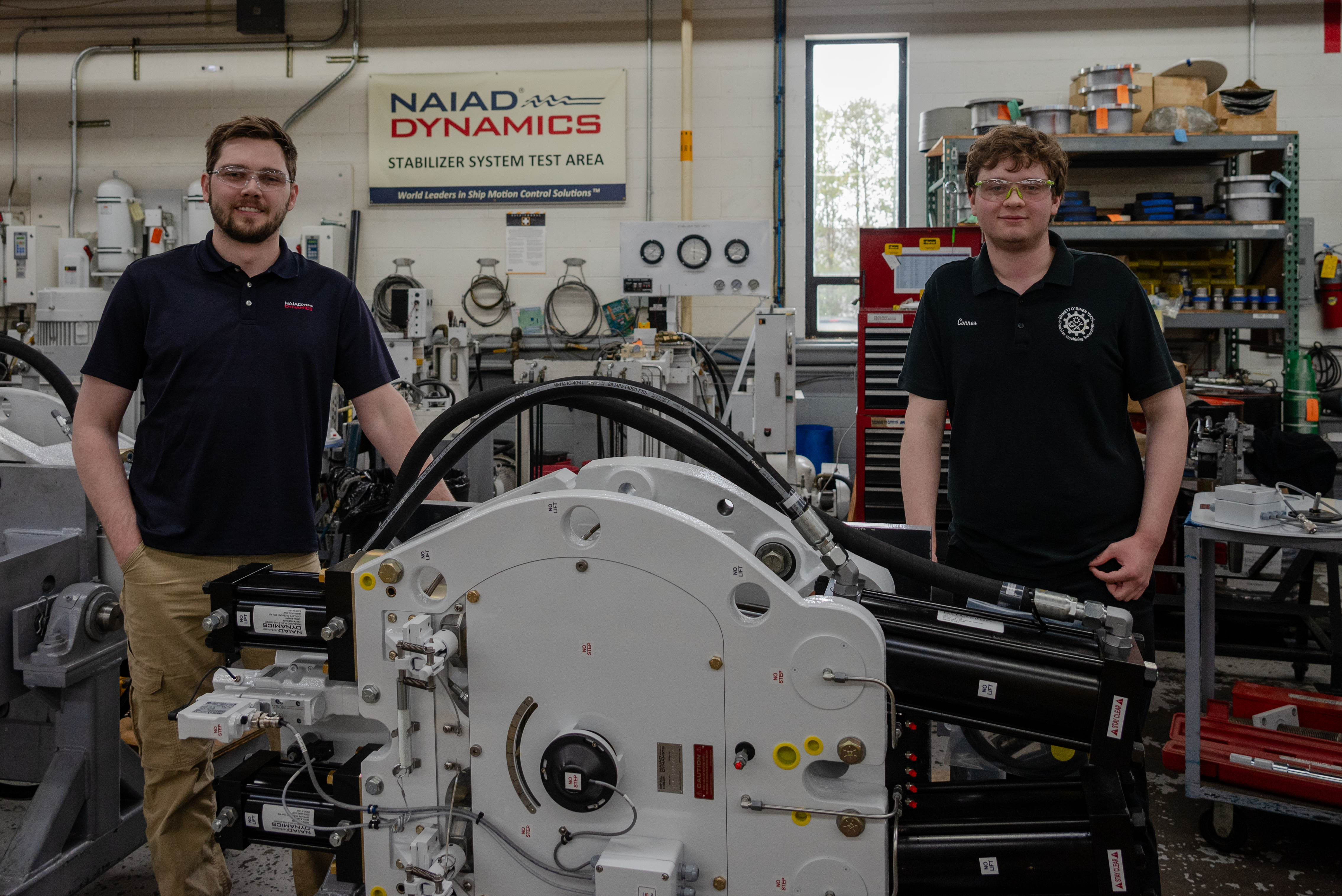As finals loom heavily in the minds of many high school students, 17-year-old Connor Lahey is already dealing with a commute across different cities, keeping his car gassed up and insured, and saving for retirement.
He has found he likes not the independence and confidence that honing his skills as a machinist at Naiad Dynamics in Shelton have brought. He also likes that he is doing a real job that is already the first step in a career thanks to employment opportunities available only to students who attend a school belonging to the Connecticut Technical Education and Career System (CTECS). Lahey is not just building skills and components, he is building his future.

CTECS is the umbrella organization through which the Connecticut Department of Education runs 17 trade schools and two adult training programs which serve 11,000 high school age students and 3,500 adult learners studying more than 30 different trades.
CTECS Executive Director Ellen Solek said that the program Lahey is participating in is vital to the state’s economy, particularly with increasing appreciation among younger generations for careers without full degrees.
“We have students at CTECS who recognize that there’s a wonderful living to be made in the trades, and they can certainly still pursue a two or four year degree, but it becomes optional because they can go out and start earning a full time income the day they graduate, and sometimes before,” Solek said.
“We’re able to offer that opportunity to students from grades 9 to 12, and also at the adult level, and we’re really excited about the feedback we get from both employers and our students,” Solek added. “They’re thrilled that they can go out in the workforce, jump right in, and begin to make a living right away, and often times a healthy living.”

“I saw machining in our open house,” Lahey recalled. “I thought it was really cool, making something out of nothing, or making something out of a big block.”
After studying for several years in the typical curriculum at CTECS, Lahey said he was encouraged by a shop teacher to apply for a job at Naiad Dynamics.
“I researched the company on their website and saw that they made ship parts, boat parts, stabilization systems,” Lahey said. “I was like ‘oh sweet, I love boats,’ so I thought it would be a nice place to work. I came here for the interview, and I really liked everybody. I liked what they were doing, I liked the people, and I felt that I could learn here for my career.”
Steve Venables, a Mechanical Design Engineer at Naiad Dynamics indicated that the feeling was mutual and that Lahey was already making valuable contributions while learning about his chosen field.
“Where Conor’s primarily working is on the manual mills,” Venables explained. “People tend to hear its manual work and think it’s a relatively low skill floor. But I’ll say that you want some of your most skilled machinists working on the manual jobs. You can make an entire career solely working on manual machines because the skill needed there is so high.”
According to Venables more advanced automated machining tools can be important additions to the floor, but they require people who understand the whole process of manual work to program properly.
“You definitely want to learn how to use the manual machines first before you go on to the computerized machines,” Lahey added.
“Connor is still working on those fundamentals, but those will take him far. You can make an entire career out of that,” said Venables.




















